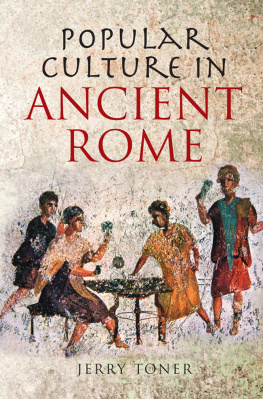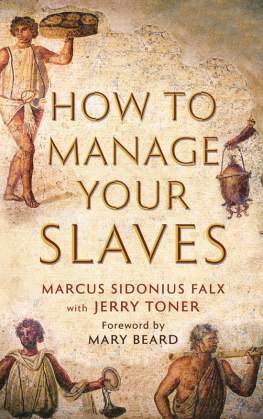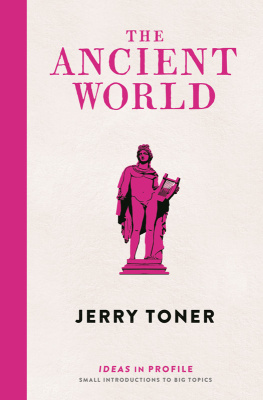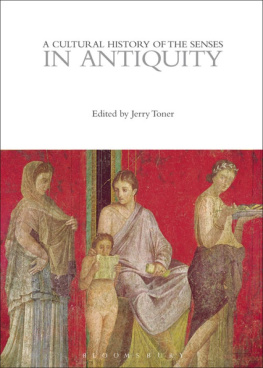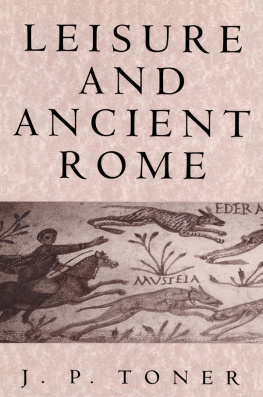Copyright Jerry Toner 2009
The right of Jerry Toner to be identified as Author of this Work has been asserted in accordance with the UK Copyright, Designs and Patents Act 1988.
First published in 2009 by Polity Press
Polity Press
65 Bridge Street
Cambridge CB2 1UR, UK
Polity Press
350 Main Street
Malden, MA 02148, USA
All rights reserved. Except for the quotation of short passages for the purpose of criticism and review, no part of this publication may be reproduced, stored in a retrieval system, or transmitted, in any form or by any means, electronic, mechanical, photocopying, recording or otherwise, without the prior permission of the publisher.
ISBN-13: 978-0-7456-4309-0
ISBN-13: 978-0-7456-4310-6 (pb)
ISBN-13: 978-0-7456-5490-4 (Multi-user ebook)
ISBN-13: 978-0-7456-5491-1 (Single-user ebook)
A catalogue record for this book is available from the British Library.
The publisher has used its best endeavours to ensure that the URLs for external websites referred to in this book are correct and active at the time of going to press. However, the publisher has no responsibility for the websites and can make no guarantee that a site will remain live or that the content is or will remain appropriate.
Every effort has been made to trace all copyright holders, but if any have been inadvertently overlooked the publishers will be pleased to include any necessary credits in any subsequent reprint or edition.
For further information on Polity, visit our website: www.politybooks.com
Illustrations
1. Relief showing the inside of a butchers shop
2. Relief of a farmer driving to market
3. A wall painting from Pompeii showing bread being doled out to the poor
4. Votive offering of a blind girl
5. A detail of the Arch of Marcus Aurelius
6. Tintinnabulum in the form of a gladiator fighting his own phallus, used to ward off evil spirits
7. A folded lead curse tablet
8. Happiness lives here, not in a brothel, but a bakery
9. A shop sign in Pompeii
10. That most popular hero, the charioteer
11. A wall painting of a fight in the crowd at the amphitheatre in Pompeii
12. Mosaic showing itinerant musicians in the street
13. Mosaic of a personification of winter
14. A classy cookshop in Pompeii
15. A scene depicting a ritual of the cult of Isis
16. Mosaic showing the wide-eyed excitement of the crowd at the circus
Acknowledgements
I want to thank a number of people, without whom this book would never have been written: Justin Meggitt and Peter Garnsey for all their help, support and intellectual input over many years; Melanie Wright and Chris Kelly for all their advice and encouragement; and Emma Widdis and Anne Henry, who introduced me to, and taught me much about, the area of sensory history. I also want to thank Jon Gifford, Jason Goddard, Chris Hartley, Peter Harvey and Miranda Perry, who all helped keep me sane while I was carrying out my research. I owe a special debt of gratitude to the President and Fellows of Hughes Hall, Cambridge, for their generous award of a Research Fellowship, which allowed me to carry out my work in such a pleasant and stimulating environment. I also want to thank the staff of the Cambridge University Library and Classics Faculty, who have always been exceptionally helpful. The team at Polity did their usual excellent job in producing the book and my thanks go to Andrea Drugan in particular. The anonymous readers for Polity provided many astute comments and helpful criticisms, for which I am very grateful.
My mother worked for many years in Cambridge as a college servant, as they were known in those days, to support her three children and disabled husband. Watching her showed me how hard it can be for ordinary people to make ends meet and deal with a socially distant and sometimes difficult elite (thankfully the Governing Body of her college did not possess the powers of the Roman judiciary). Thankfully also she believed in education, which allowed me to move upstairs and indulge in the luxury of Roman history. This book is dedicated to her in gratitude for that.
Introduction: Elite and Popular Cultures
This is a book about popular culture in the Roman world. Popular culture is probably best defined in a negative way as the culture of the non-elite. The non-elite (I shall also call them simply the people) comprised a whole host of different social groups peasants, craftsmen and artisans, labourers, healers, fortune-tellers, storytellers and entertainers, shopkeepers and traders but also consisted of their women, their children, and the have-nots of Roman society: slaves and those who had fallen into destitution and beggary. The culture these groups shared was very much the unofficial and subordinate culture of Roman society.
In total, we are talking about tens of millions of people inhabiting a region stretching from the damp lowlands of Scotland to the baking-hot banks of the river Nile. Dozens of local languages, most of which we have little or no trace of, jostled alongside the official Latin and Greek. It will never be possible to re-create the richness of each of these local cultures. We are also looking at a period spanning hundreds of years, from roughly 100 BCE to 500 CE. The evidence is so scanty that we cannot examine the popular culture of any one point in time. Regrettable though this is, it need not present an insurmountable obstacle. The argument of this book is that the popular culture can best be understood as a whole. Popular culture represented a set of attitudes, which in many ways can be seen as responses to the broadly similar social, economic and environmental conditions that the majority of the population of the Roman Empire faced throughout its history. I will be trying to look at the themes that characterized and dominated the lives of these largely voiceless people.
The non-elite were too great a hotchpotch of differing groups to be united by a single, monolithic culture. They inhabited a complex world of different geographies, wealth and status levels that meant that no uniform way of life could ever exist. One of the main internal divisions was between slaves and the free. Most Roman citizens saw themselves as anything but servile. But the poorest of the free could easily find themselves in a far worse material condition than most of the slave population. An increasing number of them drew their ancestry from the slave body. That might explain their vigorous protests against the execution in 61 CE of Pedanius Secunduss entire household of 400 slaves, after his murder by one of them. The fervent desire for freedom that we encounter among many slaves argues for a shared outlook with the free. Both free and slave valued the same privileges. They took their pleasures in the same boisterous way. They faced the same social pressures, albeit in varying degrees. Both had to cope with a system of hierarchy that placed them at the whim of the powerful, even more so as the value of citizenship declined under the empire. The people had their own marginals too: beggars, bandits, the mad. There was never just a simple division between free and slave.
The non-elite were not unified by class interests: few if any elements of class consciousness can be sensed in the surviving record. Most of them saw their neighbours as competitors not comrades in the harsh struggle for scarce resources. To have nothing was to be nothing in the Roman world. Theirs was a culture where people strove to look down on their neighbours with something of the same disdain that the elite looked down on them. For the most part, these were people who were far too busy getting on in the world, or just striving to maintain what little they had, than to worry about whether anything fundamental was wrong with the system itself.

